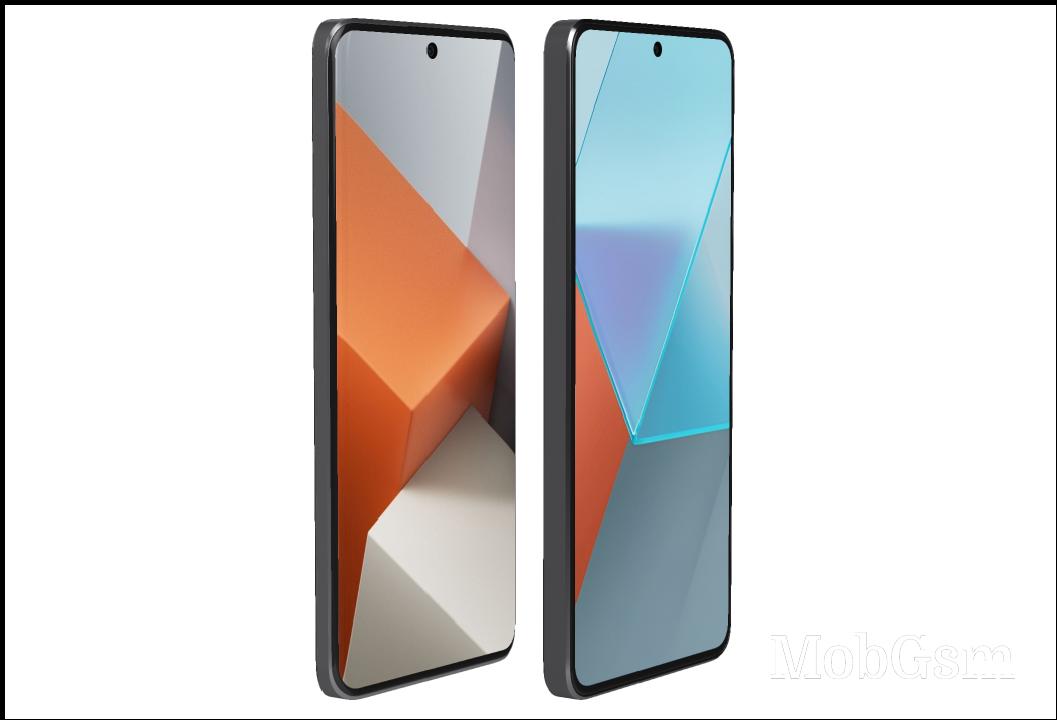Xiaomi Redmi Note 13 Pro+ vs. Redmi Note 13 Pro

The dilemma between the Xiaomi Redmi Note 13 Pro+ and the non-plus Pro from the same family is likely a common one. Not only do these devices offer similar hardware, but the price gap isn"t huge either.
When it comes to software and overall user experience, it"s hard to tell the difference. But the 13 Pro+ sits above the Pro with a more flagship-like design (curved front and back panels), better build and snappier hardware. On the other hand, the 13 Pro and 13 Pro+ are more alike than not - same display, battery capacity, cameras and speakers.
So if you find yourself in that conundrum, continue reading to learn about the nuances.
Table of Contents:
For starters, you can compare the complete specs sheets or directly continue with our editor"s assessment in the following video or in the following text.
Size comparison
As expected, the two Redmis are almost identical in size, with the more expensive 13 Pro+ being slightly thicker. However, the Plus variant feels easier to handle and feels thinner too. That"s mostly because of its curved front and back panels. This helps with the grip, especially compared to the 13 Pro"s flat frame.
Additionally, the 13 Pro+ has a more premium feel, partly because of the curvatures and the materials used. The 13 Pro+ has an aluminum side frame, while the non-Plus settles for а plastic one. Moreover, the Plus has a vegan leather variant, if you are into that stuff, and offers better ingress protection (IP68 vs. IP54).
All of these differences may sound trivial, but they are quite significant when comparing the two handsets in person. But since you probably don"t have access to both at the same time, we suggest taking a look at the virtual 3D models to get a good grasp of how they compare size-wise.

Display comparison
Тhe two Redmis employ an identical 6.67-inch 120Hz OLED panel with 12-bit color depth, Dolby Vision and HDR10+ support. We are pretty confident that Xiaomi used the same panel for both smartphones as even our tests show, for all intents and purposes, identical results with a brightness boost in auto mode at up to 1,300 nits.
The only difference is the curvature of the Redmi Note 13 Pro+"s front panel, making the bezels look even thinner.
Battery life
To our surprise, the two devices post similar Active Use Scores with only a few minutes difference. We are surprised because the two devices use two very different chipsets - the Snapdragon 7s Gen 2 powering the non-Plus and the Dimensity 7200 is in charge of the 13 Pro+. Then again, both handsets run on the same software (HyperOS + Android 14), feature the same display and battery capacities are pretty much the same too (5,000 mAh vs. 5,100 mAh).
There"s a little nuance in both tests, though. The Redmi Note 13 Pro+ offers slightly longer gaming runtime and a tad better video playback, hence why it pulls ahead of the non-Plus. Either way, the differences are mostly negligible, so for the most part, battery life is the same.
Charging speed
The charging capability is undoubtedly one of Redmi Note 13 Pro+"s standout features. The handset uses Xiaomi"s proprietary 120W HyperCharge, often found on the company"s flagship models, while the standard 13 Pro settles for a 67W charging solution.
As expected, the Plus is considerably faster than the vanilla Pro and even completes a full charging cycle within 30 minutes. The 13 Pro, on the other hand, requires an additional 17 minutes to charge fully.
Speaker test
Although sound tuning is largely a subjective matter, we believe the standard Redmi Note 13 Pro has the better set of speakers. Loudness-wise, the two are almost identical, but the standard Pro is a clear winner when it comes sound quality.
The Note 13 Pro+ has that ring at higher volume levels, and we don"t mean that in a good way. The highs and vocals are slightly distorted, while the bass isn"t enough to give music tracks much-needed fullness. Don"t get us wrong, though, both devices offer good speaker quality, but the non-Plus version has fuller sound and more balanced vocals and mids. It just sounds warmer and cleaner.
Performance
The Redmi Note 13 Pro+ uses a MediaTek Dimensity 7200 SoC, which, on paper, should be faster than the Snapdragon 7s Gen 2 powering the Redmi Note 13 Pro. The Pro+ offers 256GB of storage by default, while the 13 Pro only has 128GB. The Plus also has faster UFS 3.1 storage than the older UFS 2.2 inside the non-Plus.
When it comes to raw performance, the Pro+"s Dimensity 7200 falls behind the 13 Pro by 6% in a multi-core scenario, while a combined test, like the AnTuTu 10, shows a significant 34% lead over the Snapdragon 7s Gen 2. The more expensive Redmi maintains a solid lead over its cheaper sibling in 3DMark"s GPU-heavy Wild Life test with a 40% difference.
Benchmark performance
Despite the near-identical CPU performance, the Dimensity 7200 SoC inside the 13 Pro+ is overall the better chip, especially if you plan on launching a game or two from time to time. It has a significantly more powerful GPU, as evidenced by the combined and GPU-intensive benchmarks.
Camera comparison
The Redmi Notes offer identical camera hardware. They use a 200MP, 1/1.4" main camera with f/1.7 aperture and OIS, coupled with an 8MP f/2.2 ultrawide camera and 2MP dedicated macro unit.
For selfies, the Redmis use a 16MP, 1/3.06" shooter with f/2.4 aperture.
For the most part, we expect similar quality and overall performance and every difference we may observe is likely due to the image signal processing units (ISP).
Image quality
As we expected, the daylight photos taken with the main cameras are quite similar in overall quality. Sharpness and detail are comparable, although the non-Plus may have a slight advantage in both aspects. Conversely, the Plus produces more lively images with additional saturation and higher exposure. The non-Plus goes for a more natural color tone and lower exposure, resulting in darker shadows and a grittier vibe.



Redmi Note 13 Pro+: 0.6x • 1x • 2x



Redmi Note 13 Pro: 0.6x • 1x • 2x
The same can be said about the ultrawide cameras, but the Plus goes overboard with the additional sharpness that doesn"t necessarily improve image quality. We prefer the standard Pro"s ultrawide stills.
For some odd reason, the 2x zoom samples taken with the non-Plus look much better. They are cleaner and much more detailed.
In low-light scenarios, the Redmi Note 13 Pro is the clear winner in our books. It maintains a more natural look with darker shadows, higher contrast and more accurate color reproduction. It also has a more accurate white balance, while the Plus" stills look too bright and with cold color temperature. The non-Plus is somewhat sharper too. The same applies to the 2x zoom samples.



Redmi Note 13 Pro+: 0.6x • 1x • 2x



Redmi Note 13 Pro: 0.6x • 1x • 2x
And as for the ultrawide stills, both are not ideal but the non-Plus does a better job at maintaining sharpness and detail.
Video quality
For some reason, the non-Plus videos look a lot better, especially the ones taken with the main camera. In fact, we had to double-check whether the 13 Pro+ video isn"t 1080p. The overall rendition may be similar, but the non-Plus video is sharper and much more detailed. It has once again slightly darker exposure.
Verdict
Today, 7-8 months after the release of the Redmi Note 13 family, the price gap between the 13 Pro+ and 13 Pro has grown smaller (€40-50). In such case, it would be logical to assume the Plus version is the better value - it has a better chipset, faster charging and a better build with a more premium-like design. It even has a proper proximity sensor instead of a virtual one like the non-Plus. Nevertheless, this comparison isn"t a clear cut.
Upon closer examination, the standard Pro version makes a good case for itself by offering a better camera experience overall (probably due to Qualcomm"s ISP) and nicer speakers. And since the two devices have comparable display quality, battery life and fast enough charging, why not save a few bucks and go for the more affordable 13 Pro? For the most part, the standard Pro delivers the same user experience at a lower price.
- The better build and better ingress protection.
- The more powerful chipset and 2x the base storage.
- The faster charging.



















